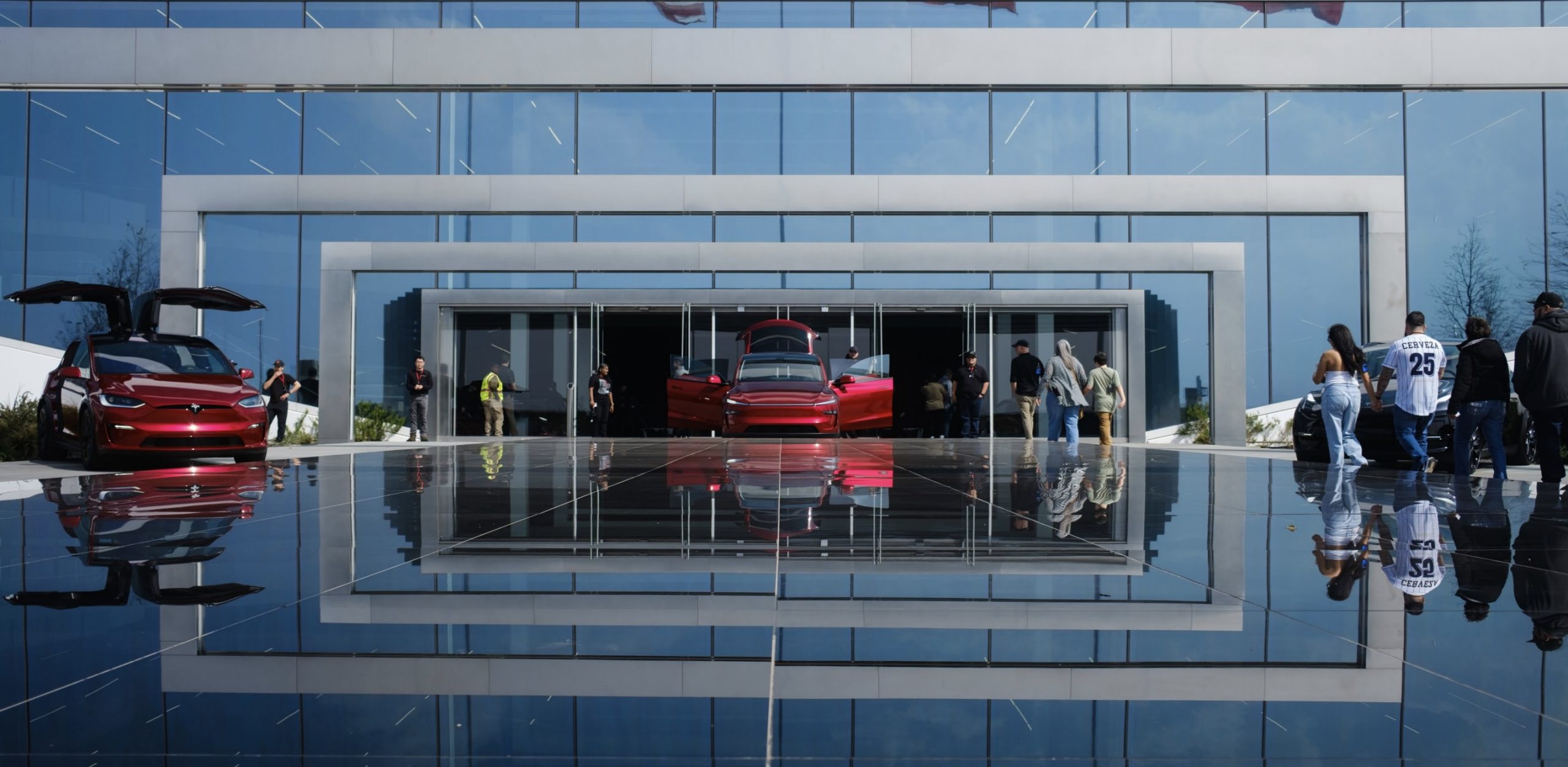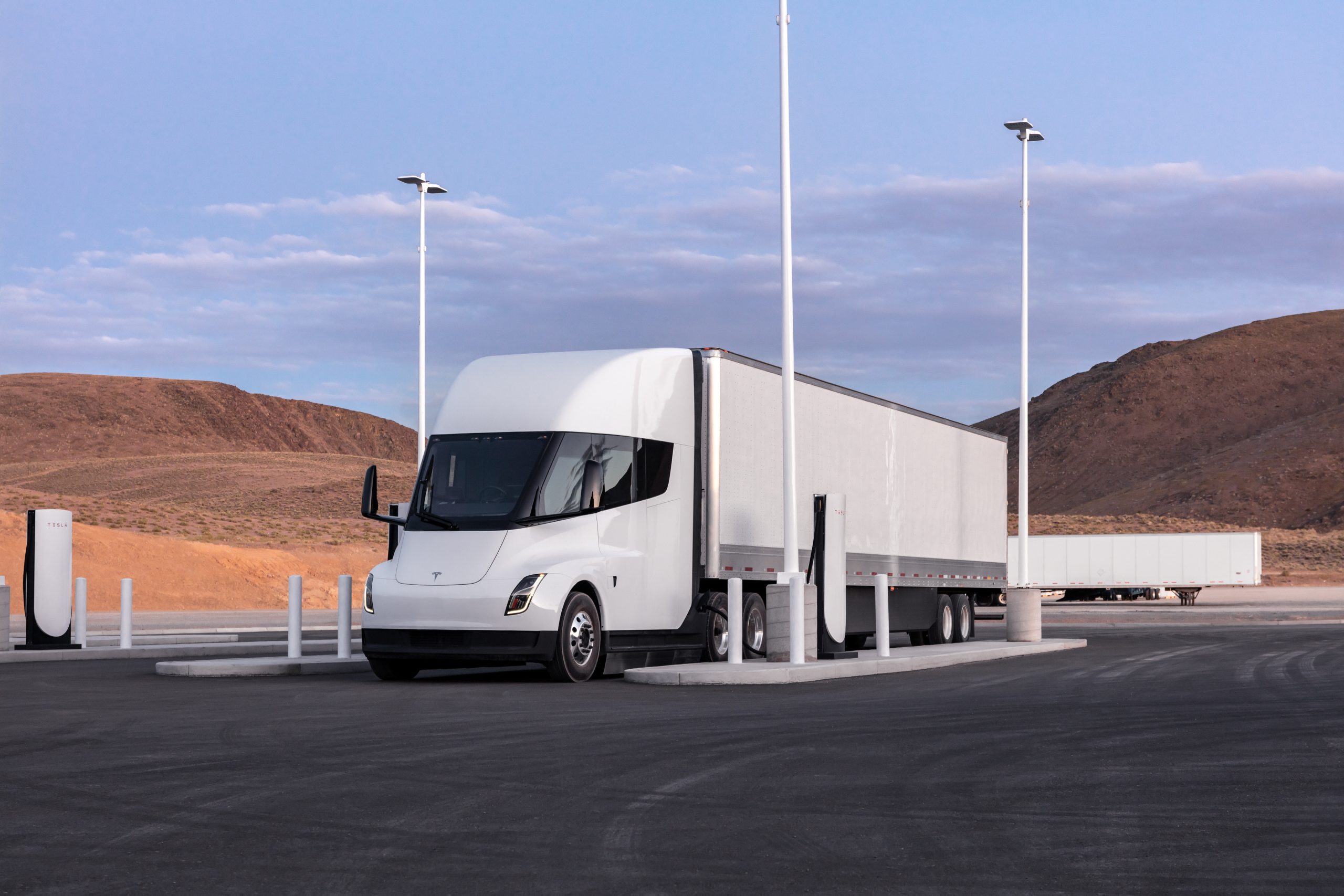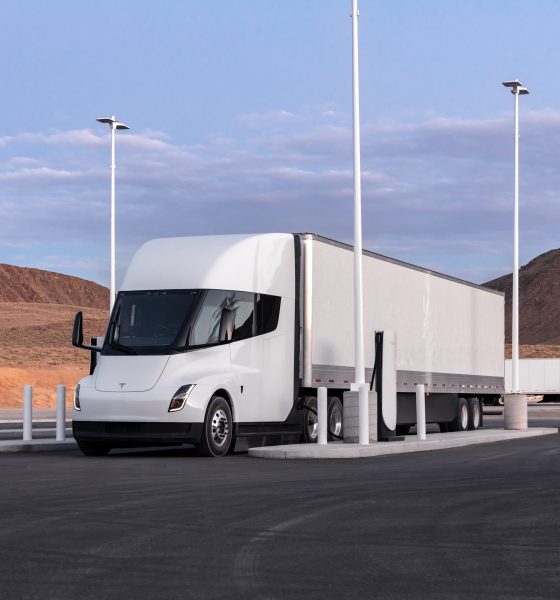You’ll never know how far the Tesla Semi, the Volvo VNR, or other electric semi-trucks will go according to EPA testing standards. The answer is incredibly complex, but simply put, the EPA does not test or evaluate heavy-duty trucks for range ratings. Don’t expect the agency to tell you how far the Tesla Semi or other EV trucks will go because testing simply does not happen.
This allows manufacturers of heavy-duty electric vehicles and semi-trucks to have a profoundly unique ability to control the narrative that surrounds how far their product can go on a full charge. As crazy as it sounds, customers leaping into the all-electric Class 8 sector are putting trust in the companies they buy from when weighing what is arguably the most important metric of the EV ownership experience: range.
Following the certification of the Tesla Semi by the EPA in late October, which Teslarati exclusively reported on, we were bombarded with questions surrounding the vehicle’s EPA-rated range. Light-duty passenger electric vehicles and their success can almost always be gauged by how customers react to range ratings during unveiling events. When Lucid announced it had successfully reached an EPA-rated 520 miles of range on a single charge in the Air Dream Edition, the EV world was astounded. While the vehicle has felt heavy demand on order logs, Lucid still fulfills them to this day.
Meanwhile, other manufacturers bring vehicles to the market with relatively “light” range projections or ratings. It is always disappointing to see a vehicle with so much potential offer so little of what EV owners want: driving range. People do not want to stop at EV chargers. They want to continue their journey on the roads.
Polestar’s recently-unveiled Polestar 3 comes to mind when I (and some others) think of an astounding vehicle with not-so-astounding range and efficiency. Despite its 111 kWh battery pack, the Polestar 3 only offers 379 miles of WLTP-rated range. WLTP ratings are usually much more generous than EPA ratings, so I am anticipating the vehicle to reach around 300 miles of range when the U.S. agency gets its hands on it.
When light-duty vehicles are assessed, approved, and granted Certificates of Conformity from the EPA, they are available for the public to read and include results on efficiency and range testing. This is where heavy-duty vehicles and the testing process differ vastly from light-duty ones.
While these are both vehicle classes that are purchased and used by consumers on public roads, only light-duty vehicles are assessed for range ratings, while heavy-duty vehicle manufacturers do not have their products’ range “evaluated, reported, or included” in an application for certification, the EPA said in an emailed statement.
The EPA has numerous documents relating to this idea, as well as the Society of Automotive Engineers (SAE). However, the documents never directly specified why heavy-duty vehicles are not required to be tested by federal agencies. That does not mean that reasoning is not available.
The fact of the matter is the agency may not have been prepared to test heavy-duty electric vehicles for range ratings, especially this soon. A document found in the Federal Register that was submitted by the EPA and Department of Transportation (USDOT) in 2016 titled, “Greenhouse Gas Emissions and Fuel Efficiency Standards for Medium- and Heavy-Duty Engines and Vehicles— Phase 2,” which established rules to reduce greenhouse gases, includes an interesting tidbit regarding electric vehicles:
“Given the high up-front costs and the developing nature of this technology, the agencies do not project fully electric vocational vehicles to be widely commercially available in the time frame of the final rules. For this reason, the agencies have not based the Phase 2 standards on adoption of full-electric vocational vehicles. We received many comments on electric trucks and buses. Specifically, EEI provided information on the total cost of ownership for electric trucks, and some applications may see attractive long-term cost.”
The time frame of the final rules is set to end in 2027 and apply to model year 2027 vehicles, according to the document.
The agency recognized in 2016 that these technologies may be in development, and we all know they are. As the EPA and NHTSA may not have been able to predict how quickly all-electric heavy-duty trucks would become a prevalent piece of American logistics, the agencies were aware that this technology was coming in the future:
“Phase 2 will include technology advancing standards that will phase in over the long-term (through model year 2027) to result in an ambitious, yet achievable program that will allow manufacturers to meet standards through a mix of different technologies at reasonable cost. The terminal requirements go into effect in 2027, and would apply to MY 2027 and subsequent model year vehicles, unless modified by future rulemaking. The Phase 2 standards will maintain the underlying regulatory structure developed in the Phase 1 program, such as the general categorization of MDVs and HDVs and the separate standards for vehicles and engines. However, the Phase 2 program will build on and advance Phase 1 in a number of important ways including the following: basing standards not only on currently available technologies but also on utilization of technologies now under development or not yet widely deployed while providing significant lead time to assure adequate time to develop, test, and phase in these controls.”
So, how do manufacturers determine range?
This is where things get very tricky because if the EPA is not testing the range itself as an unbiased government organization, it means manufacturers are required to test the vehicles themselves, leaving consumers to trust the companies that they are buying from.
Technically, manufacturers could say whatever they want regarding their electric trucks. Tesla has maintained significant range ratings for the Semi throughout its development, with Elon Musk recently stating the vehicle will have 500 miles of range per charge, with a sizeable payload. Of course, Tesla has been testing its vehicle internally and with the help of verified customers, like Frito Lay, who will take delivery of the first Semi on December 1.
It really comes down to independent testing. Volvo, for example, tested the range of its all-electric VNR Class 8 heavy-duty truck through a pilot program with third-party companies. Through its LIGHTS (Low Impact Green Heavy Transport Solutions) project, Volvo had companies like NFI Industries test the VNR through its commercial operations to prove and demonstrate the truck’s ability.
“By participating in the Volvo LIGHTS project, NFI is helping to prove that Volvo’s VNR Electric trucks can handle the daily rigors of freight movement. NFI continues to be a leader in sustainability, and it comes across in everything they do,” Peter Voorhoeve, president of Volvo Trucks North America, said. “NFI is realizing the immediate value the electric VNR provides—not just by eliminating emissions but creating an enthusiastic workforce complimenting the experience of driving these electric truck models.”
The LIGHTS project ran through 2021 and provided Volvo with “real-world operational data critical to the successful commercial scaling of these vehicles.”
So how do you know how far an all-electric Class 8 heavy-duty vehicle goes? You might literally have to find out for yourself, or you can trust the manufacturer’s word for it.
I’d love to hear from you! If you have any comments, concerns, or questions, please email me at joey@teslarati.com. You can also reach me on Twitter @KlenderJoey, or if you have news tips, you can email us at tips@teslarati.com.

Investor's Corner
Tesla releases Q4 and FY 2025 vehicle delivery and production report
Deliveries stood at 406,585 Model 3/Y and 11,642 other models, for a total of 418,227 vehicles.

Tesla (NASDAQ:TSLA) has reported its Q4 2025 production and deliveries, with 418,227 vehicles delivered and 434,358 produced worldwide. Energy storage deployments hit a quarterly record at 14.2 GWh.
Tesla’s Q4 and FY 2025 results were posted on Friday, January 2, 2026.
Q4 2025 production and deliveries
In Q4 2025, Tesla produced 422,652 Model 3/Y units and 11,706 other models, which are comprised of the Model S, Model X, and the Cybertruck, for a total of 434,358 vehicles. Deliveries stood at 406,585 Model 3/Y and 11,642 other models, for a total of 418,227 vehicles.
Energy deployments reached 14.2 GWh, a new record. Similar to other reports, Tesla posted a company thanked customers, employees, suppliers, shareholders, and supporters for its fourth quarter results.
In comparison, analysts included in Tesla’s company-compiled consensus estimate that Tesla would deliver 422,850 vehicles and deploy 13.4 GWh of battery storage systems in Q4 2025.
Tesla’s Full Year 2025 results
For the full year, Tesla produced a total of 1,654,667 vehicles, comprised of 1,600,767 Model Y/3 and 53,900 other models. Tesla also delivered 1,636,129 vehicles in FY 2025, comprised of 1,585,279 Model Y/3 and 50,850 other models. Energy deployments totaled 46.7 GWh over the year.
In comparison, analysts included in Tesla’s company-compiled consensus expected the company to deliver a total of 1,640,752 vehicles for full year 2025. Analysts also expected Tesla’s energy division to deploy a total of 45.9 GWh during the year.
Tesla will post its financial results for the fourth quarter of 2025 after market close on Wednesday, January 28, 2026. The company’s Q4 and FY 2025 earnings call is expected to be held on the same day at 4:30 p.m. Central Time.
Elon Musk
Starlink achieves major milestones in 2025 progress report
Starlink wrapped up 2025 with impressive growth, adding more than 4.6 million new active customers and expanding service to 35 additional countries, territories, and markets.

Starlink wrapped up 2025 with impressive growth, adding more than 4.6 million new active customers and expanding service to 35 additional countries, territories, and markets. The company also completed deployment of its first-generation Direct to Cell constellation, launching over 650 satellites in just 18 months to enable cellular connectivity.
SpaceX highlighted Starlink’s impressive 2025 progress in an extensive report.
Key achievements from Starlink’s 2025 Progress
Starlink connected over 4.6 million new customers with high-speed internet while bringing service to 35 more regions worldwide in 2025. Starlink is now connecting 9.2 million people worldwide. The service achieved this just weeks after hitting its 8 million customer milestone.
Starlink is now available in 155 markets, including areas that are unreachable by traditional ISPs. As per SpaceX, Starlink has also provided over 21 million airline passengers and 20 million cruise passengers with reliable high-speed internet connectivity during their travels.
Starlink Direct to Cell
Starlink’s Direct to Cell constellation, more than 650 satellites strong, has already connected over 12 million people at least once, marking a breakthrough in global mobile coverage.
Starlink Direct to Cell is currently rolled out to 22 countries and 6 continents, with over 6 million monthly customers. Starlink Direct to Cell also has 27 MNO partners to date.
“This year, SpaceX completed deployment of the first generation of the Starlink Direct to Cell constellation, with more than 650 satellites launched to low-Earth orbit in just 18 months. Starlink Direct to Cell has connected more than 12 million people, and counting, at least once, providing life-saving connectivity when people need it most,” SpaceX wrote.
News
Tesla Giga Nevada celebrates production of 6 millionth drive unit
To celebrate the milestone, the Giga Nevada team gathered for a celebratory group photo.

Tesla’s Giga Nevada has reached an impressive milestone, producing its 6 millionth drive unit as 2925 came to a close.
To celebrate the milestone, the Giga Nevada team gathered for a celebratory group photo.
6 million drive units
The achievement was shared by the official Tesla Manufacturing account on social media platform X. “Congratulations to the Giga Nevada team for producing their 6 millionth Drive Unit!” Tesla wrote.
The photo showed numerous factory workers assembled on the production floor, proudly holding golden balloons that spelled out “6000000″ in front of drive unit assembly stations. Elon Musk gave credit to the Giga Nevada team, writing, “Congrats on 6M drive units!” in a post on X.
Giga Nevada’s essential role
Giga Nevada produces drive units, battery packs, and energy products. The facility has been a cornerstone of Tesla’s scaling since opening, and it was the crucial facility that ultimately enabled Tesla to ramp the Model 3 and Model Y. Even today, it serves as Tesla’s core hub for battery and drivetrain components for vehicles that are produced in the United States.
Giga Nevada is expected to support Tesla’s ambitious 2026 targets, including the launch of vehicles like the Tesla Semi and the Cybercab. Tesla will have a very busy 2026, and based on Giga Nevada’s activities so far, it appears that the facility will be equally busy as well.










